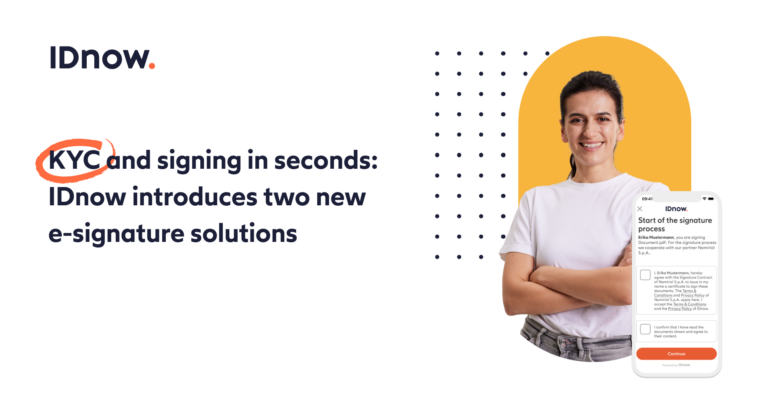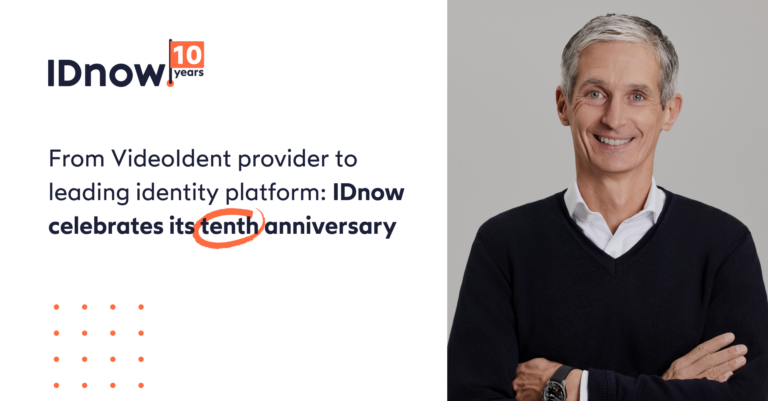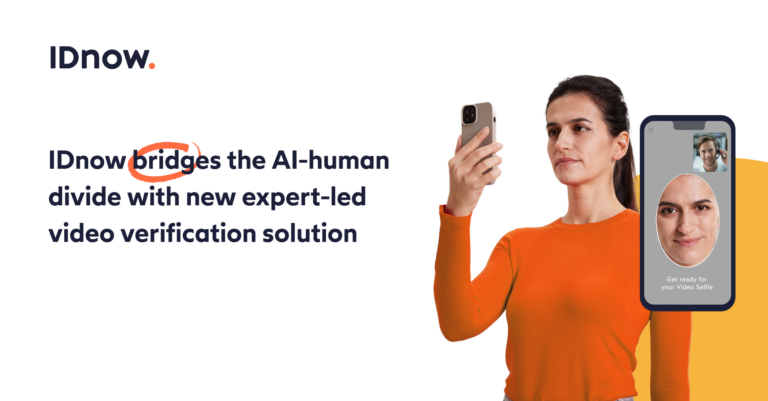Munich, April 12, 2023 – IDnow, a leading European platform provider for identity proofing, has recorded an increase in transactions with the German online ID function (eID) by more than a factor of four for the year 2022. This means that eID usage at the Munich-based identity expert is growing much faster than the nationwide eID transaction figures, which increased by around 19% from 2021 to 2022, according to the OZGDB.
When reading out sensitive eID data, IDnow can rely on its own eID authorization certificate, issued by the Federal Office of Administration (Bundesverwaltungsamt). The certificate allows IDnow, in cooperation with the Federal Printing Office (Bundesdruckerei), to read out the eID online ID card function in accordance with the Identity Card Act (Personalausweisgesetz, PAuswG) for identity verification.
Electronic ID card: Advantages of NFC technology
At IDnow, growth has been driven primarily by the more highly regulated industries such as the financial and eGovernment sectors. It is in these sectors, in particular, that the electronic ID card with its NFC-based (near field communication) online ID function can show its strengths. Fraud prevention with this method is particularly high because the chip integrated in the ID card is extremely forgery-proof. Thanks to the high level of security, the solution is compliant with both the German Money Laundering Act (Geldwäschegesetz, GWG) and the Telecommunications Act (Telekommunikationsgesetz, TKG).
As a sovereign-notified procedure, the eID online ID function offers the highest level of security among identification procedures. In addition, the identity check with the eID takes only a few minutes and is fully automated, i.e., it can be processed without service employees.
Only 8% of the population have used the eID
Despite the recent positive developments, the penetration rate of this identification method among the German population remains at a low level. IDnow’s Digital Identity Index 2023 recently showed that even more than 10 years after its introduction, the eID function is hardly used on a broad scale. According to the YouGov survey, only 8% of the population has ever used it.
Private identification solutions such as video identification procedures in a video chat (38%) or on-site identification in a post office branch (40%) continue to dominate the German market.
One reason for this is the unfamiliarity of the eID solution – according to the Index, only 7% of the German population has any idea what the term “eID” means. The lack of use cases in everyday life, as well as the comparatively poor user-friendliness of the solution, also contribute to the fact that the method is used so little. Both a 6-digit PIN and an NFC-enabled smartphone are required. Data transmission via the NFC interface often causes users problems when reading it out.
“To counteract the low level of awareness of the solution, Germany needs extensive marketing and awareness campaigns by politicians and the private sector on the one hand. On the other hand, financial service providers, mobility providers, and telecommunications companies must dare to implement the solution in their onboarding processes. An increased range of use cases will automatically have a positive effect on awareness of the eID. All players, politics as well as businesses, must work closely together to make the eID a success after all,” explains Armin Bauer, co-founder and Managing Director Technology at IDnow.
Platform approach allows integration of different identification solutions
In the future, IDnow expects a further increase in the number of eID users due to various political decisions such as the Online Access Act (Onlinezugangsgesetz, OZG), the introduction of the BundID in additional federal states and the flat-rate energy fee for students. The higher penetration rate of NFC-enabled smartphones and onboarding in the digital wallet planned by the EU will also have a positive impact on penetration in the future.
“We see ourselves very well equipped for these developments with our platform approach. After all, there will never be one, dominant solution in identity verification, as the needs of younger, older, tech-savvy or less-savvy people differ greatly. Instead, we rely on a wide range of different identification solutions to address all citizens’ needs,” Bauer continued. “If the user has misplaced their PIN or the smartphone’s NFC interface doesn’t work, for example, they can seamlessly switch to an alternative identification solution like VideoIdent on our platform and reliably complete the onboarding process.”



